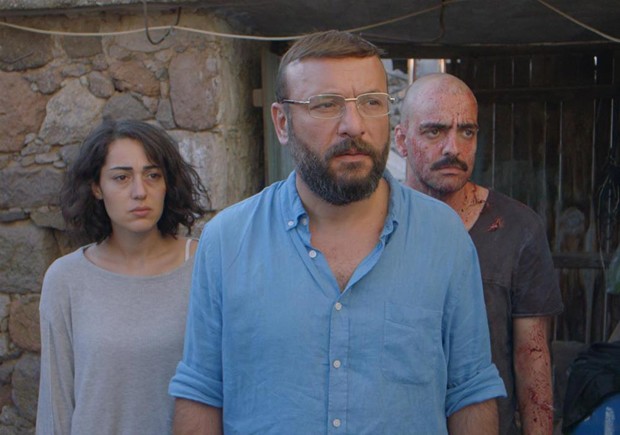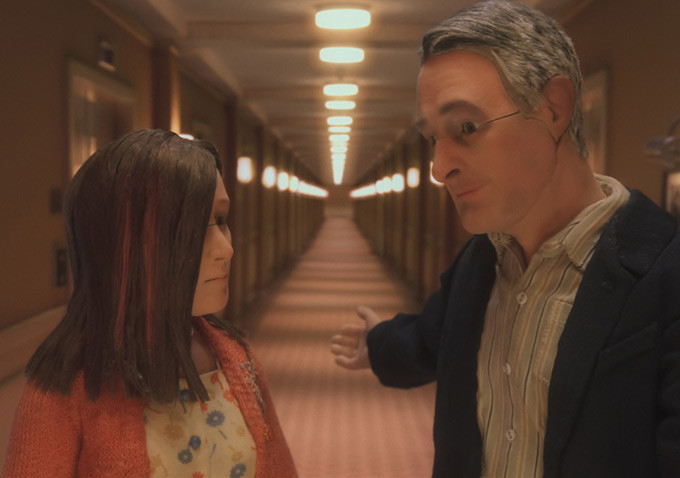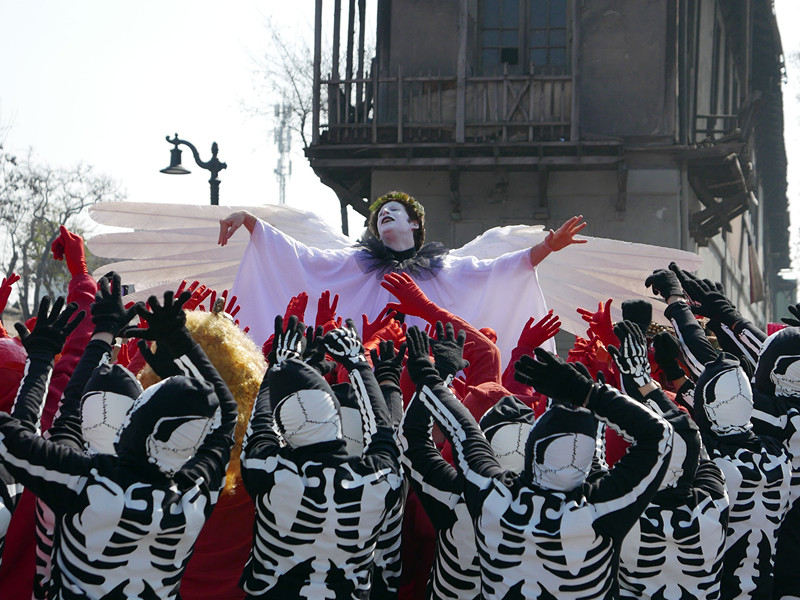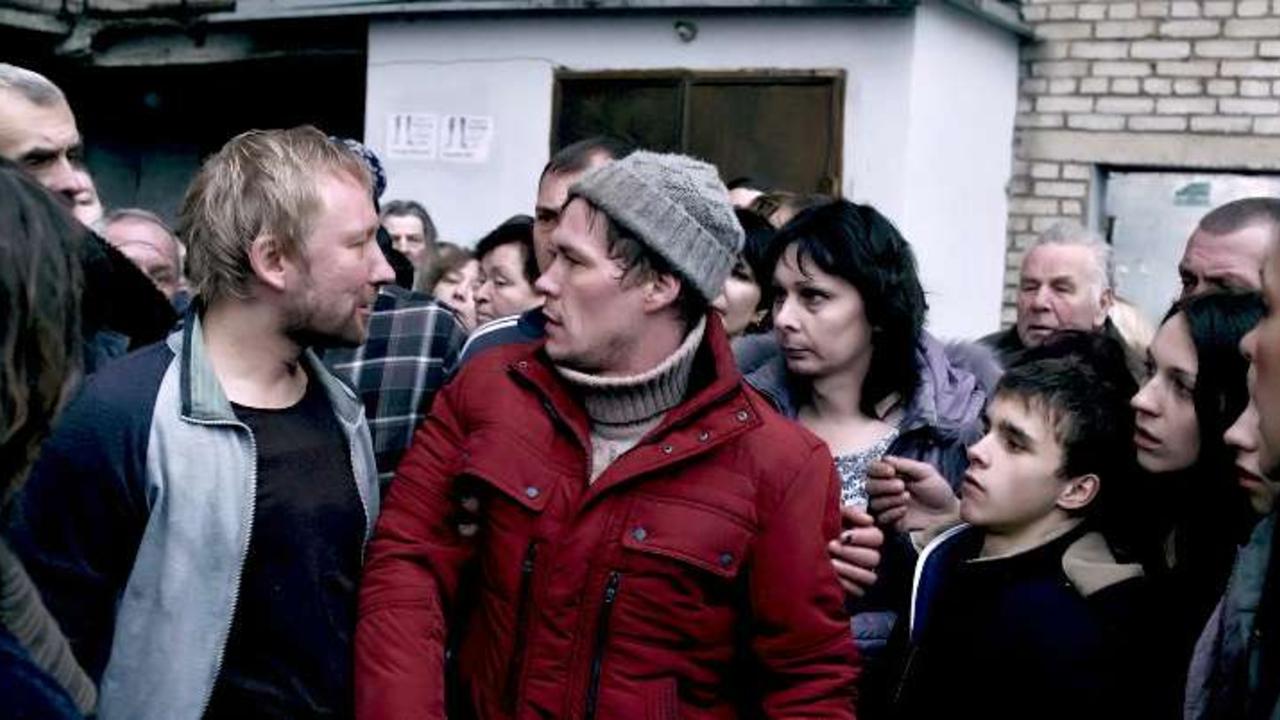5. Butterflies (2018)

“Kelebekler,” which won the Grand Jury Special Award at the Sundance Film Festival in the World Cinema section, is the new film by Tolga Karacelik, a young Turkish director who came forward with “Ivy” (2015).
The paths of the three siblings were separated years ago. After 30 years, their father wants to bring the children together and bring them back to their homes in the village of Hasanlar. Cemal, the oldest one, takes them and they embark on a journey of which they do not know the reason.
The siblings, who know each other very little, try to understand themselves, each other, and who their father is with the new surprises they encounter during their stay in the village.
Whilst questioning concepts like family, road, self, and belonging, it also offers great harmony with sharp melancholy and funny moments.
This great drama manages to realistically look at the conflicts that have become cliches nowadays, such as urban-rural, father-child, and traditional-modern, without taking itself seriously.
At the end, it evolves into a film that deals with the desire for constant escape from a world and the desire of extinction. Like the characters, the film doesn’t seek to go anywhere, and not getting anywhere becomes the attitude of itself.
4. Anomalisa (2015)

“Anomalisa” is a splendid animation made with stop-motion technique, directed and co-written by Charlie Kaufman. Powering from the inevitable uncertainty as in Kaufman’s other works, it contains all the features of his marvelous filmography.
Michael Stone, who is originally from England, is a successful writer who became famous for his book on customer service. Michael is invited to a conference and flies to Cincinnati for a day to speak.
Michael, who has escaped from the people he cares about his whole life, without knowing why, tries to find the excitement he has lost while reckoning with his regretful past at the hotel.
In addition to its unique visual experience, it stands out with its simple but quite deep story. It is a film where people can have the opportunity to look at what they have created and lost.
Kaufman examines the themes of existence, self, uniqueness, sameness, authenticity, love, loneliness, pleasure, pain and death with deep tragedy and his own ironic humor. The most honest, sincere, and sometimes hard to describe aspects of the human being are also emphasized like in his other films.
“Anomalisa” is a quite unusual film with its intriguing mise-en-scene and ingenious editing. Gradually it becomes a surprising and challenging experience that disrupts the sense of reality with its innovative structure.
3. Endless Poetry (2016)

“Poesia Sin Fin” is the autobiographical film of Chilean master director Alejandro Jodorowsky.
Jodorowsky, who left his family and immersed himself in a bohemian life in Santiago in the 1940s, meets important poets of the time, the magic of poetry, and falls in love for the first time.
The most important features of the film are the exaggerated gestures and mimicries of the characters, the colorful costumes, the theatrical narrative with dancing and puppets. It separates the audience from reality and directs them to an unreal narrative. Jodorowsky invites the audience into a crazy world full of creativity.
He reveals his style by decorating the change he experienced in his youth with social satire, as usual. It is a great stop to witness all aspects of a real artist’s portrait, free and far from normality.
2. Durak (2014)

“Durak,” which won three awards at the Locarno Film Festival, is a harsh Russian film that reveals a capitalist society and its rational ethics.
Dima, a plumber, goes to a giant building in one of the poor neighborhoods of the city for repair work. Realizing that this old dormitory building, which houses 820 people, is about to be demolished, he appeals to the mayor. But the mayor and other bureaucratic officials are well aware that the money they throw in their pockets is caused by this problem.
As the incident progresses to the point of condoning deaths, rather than removing people from the building, Dima must make decisions that affect both himself and his family.
Although Bykov has a screenplay that could turn into a political drama, he has no difficulty turning it into a gripping thriller.
While portraying a cold and ruthless Russian society, it reminds of Bulgakov’s books with its hidden sense of humor and criticism.
1. Tower (2016)

“Tower” describes a real event at the University of Texas on August 1, 1966. A 25-year-old man named Charles Whitman first kills his wife and mother at his home. Then he climbs up the tower within the university and starts shooting at people on campus.
After 96 minutes of this incident, he is killed and neutralized by a team of four people consisting of three policemen and one civilian climbing the tower. Whitman killed 16 people and injured dozens of others.
“Tower” is a documentary created by combining real images with rotoscopic animation images. Among the people interviewed in the documentary are people who were shot that day, surviving the danger of death, heroes helping the wounded, and police officers who neutralized Whitman.
This flawlessly devastating documentary, with the sound of repeated gunfire throughout the film, brings the horror of that day to the audience at any moment. In the interview part in the finale, it pushes the audience to the tough questions between past and future, punishment and conscience.
Simply haunting!